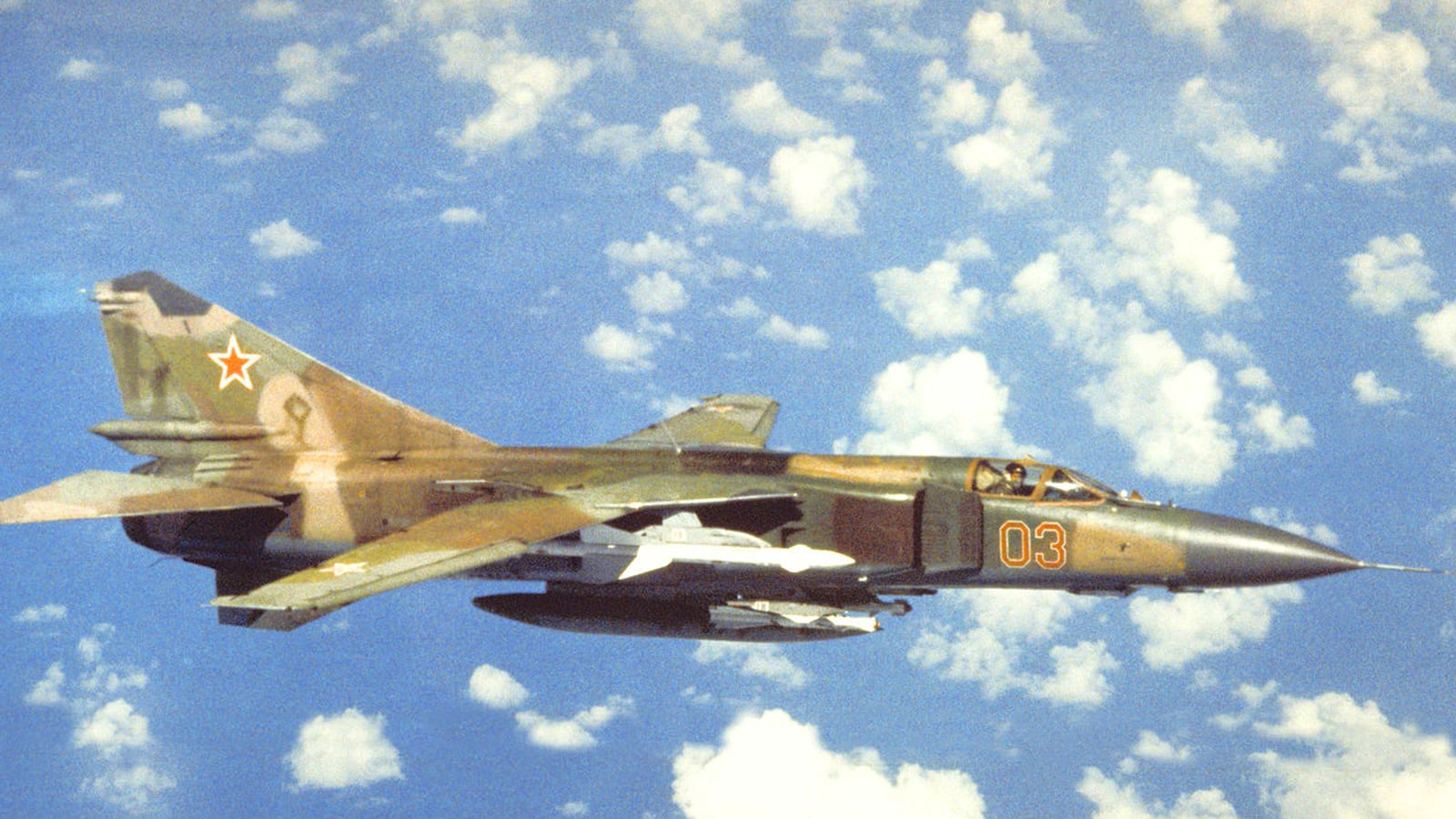The ISIS terrorist group may have acquired a few old Soviet-built MiG fighters, according to a Syrian opposition group. But even if ISIS does have jet fighters, there is little chance that the group can do any real damage with those antiques beyond their value as propaganda tools, U.S. military pilots say.
“If ISIS is flying, or is thinking about flying, it will not be doing so for very long,” one Air Force official said.
According to the Syrian Observatory for Human Rights—an opposition group based in London—ISIS has managed to acquire three Soviet-built Mikoyan MiG-21 Fishbed and MiG-23 Flogger fighters. The aircraft are allegedly being flown by former Iraqi air force pilots, who are also training wannabe ISIS aviators to fly the jets.
Additionally, ISIS appears to have a number of Aero Vodochody L-39 Albatross aircraft, traditionally used for advanced training and light attack. The terrorist group has produced at least one propaganda video purported to show the Czech-built jets in the air. But even if ISIS does have a rudimentary air force, it is basically useless in any true military sense, according to U.S. officials and American military pilots.
“I’d sell my first born to engage all three… by myself,” one highly experienced U.S. Marine Corps fighter pilot joked. Another Air Force F-15E Strike Eagle pilot said, “Send me in, coach! There’s no way they get those airborne!”
“We’re not talking about aircraft that are extremely effective at delivering ordinance both in terms of equipment and training,” said one U.S. Air Force official. “It’s simply not worth it beyond an easily discreditable propaganda ploy.”
The MiG-21 does not carry a huge amount of weaponry and was originally designed to fight other aircraft. Meanwhile, the MiG-23 is a much bigger and more complex jet that requires a professional pilot to operate properly.
Even if ISIS has such pilots—and that isn’t terribly likely—they might not last long. Though both the MiG-21 and MiG-23 are supersonic fighters, they are dated and would likely be easy prey to any modern American fighter.
Additionally, many U.S. officials questioned how well ISIS’s MiGs work. The jets may not have functional on-board systems like radars and weapons—nor does ISIS have access to the sophisticated ground control network the Soviets and their Syrian government clients used.
Many U.S. pilots were gleeful at the prospects of bagging a MiG.
However, a former, very experienced Air Force pilot who has flown both the MiG-21 and MiG-23 said that one should not underestimate the elderly Soviet jets. “Either of the MiG types must be honored, especially in the hands of a competent pilot,” the retired pilot said. “Are modern jets more capable? Of course they are.”
But just how competent are the ISIS pilots? Not very, one Air Force official told The Daily Beast. “If these are hardcore ex-Iraqi or Syrian air force Sunnis flying and instructing, their recency of flying is extremely poor,” he said. “It’s been years since they’ve flown in the type themselves, and that further weakens any credible thought of teaching new students how to fly.”
Even those veteran pilots are most likely to get themselves killed in an accident than anything else. “They are certainly a much greater personal danger to themselves than to others,” the Air Force official said.
As for the Syrian Observatory for Human Rights report that former Iraqi pilots are training new militant aviators—the retired U.S. Air Force MiG pilot is dubious. “I would just reiterate that they are high-performance aircraft, especially the MiG-23, safely flown only by pilots that have progressed from Cessna-like (general aviation) aircraft into jet trainers and then into more advanced fighting machines,” the retired pilot said. “This takes months, if not years, of sophisticated training for a pilot to reach the level of proficiency needed for successful combat operations.”
Even given that ISIS has access to training aircraft like the L-39, their prospects of training new pilots is dubious. “A big step from an L-39 to a MiG-21,” the retired Air Force pilot said. “A giant step to the MiG-23. And, there is a huge difference between flying jets like that and employing them.”
Even then, the Air Force official said, dropping a handful of bombs against the Kurds, Syrian rebels, or Iraqi or Syrian government forces would be unlikely to make much of a difference on the battlefield. “Field artillery is the better means of delivering fires in Syria and Iraq,” the official added. “Artillery is extremely abundant in both Syria and Iraq, it is relatively easier for a largely non-technically trained fighter to accomplish.”
If by some miracle ISIS were to be able to fly these fighters against any target, the group would simply be putting a bull’s eye on their airfield near Aleppo—which is where the terrorists are reportedly operating.
“Assuming a plane actually does get airborne to employ weapons for ISIS, it will immediately find itself on the top of CENTCOM’s [U.S. Central Command] time sensitive target list,” the official continued. “That means, that once positively identified, it could be destroyed with a minimal amount of coordination with command and control.”
However, while it is easy to dismiss ISIS’s new air force, the terrorist group has surprised American officials before. “I was surprised they could drive the tanks they captured,” the retired Air Force pilot said. “So, it all remains to be seen.”






